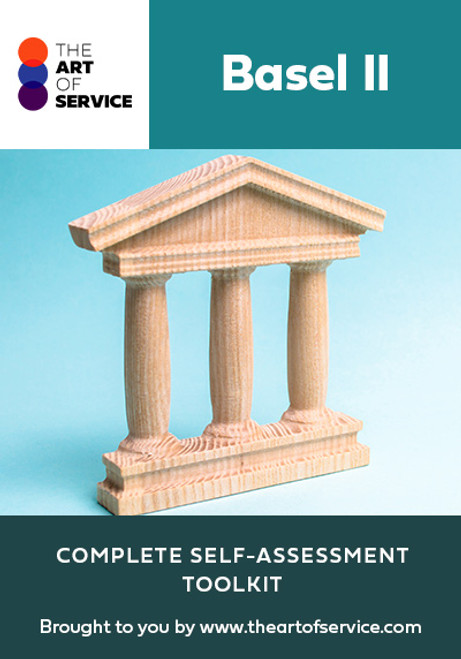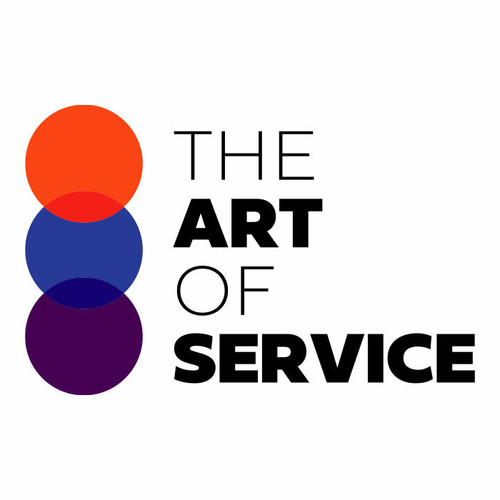Risk Management protects your organization from exposure to losses resulting from defaults by your lending and trading counterparties.
- Direct: partner with technology to drive and implement reporting process enhancements and smooth production execution.
- Lead data Quality Improvement projects to strengthen controls and improve report accuracy.
- Communicate project status and milestones.
- Interact with Financial Control to ensure completeness of month end financial close process.
- Arrange that your strategy follows organization policy, procedures and guidelines.
- Systematize: financial Resources Management.
- Coordinate: partner with various internal teams unsecured funding, finance, operations, etc.
- Guide: partner with regulatory reporting and support teams to establish correct production of monthly, quarterly and weekly.
- Arrange that your business complies; focus on team coordination and Process Improvements working with internal and external technology partners.
- Ensure you formulate; limited dependent and qualitative variable models.
- Ensure you relay; lead the development of Technology Solutions to serve the needs of the business working closely with your technology partners.
- Support the review and resolution of cash breaks.
- Ensure continuous compliance with relevant capital Management Policies, Rules And Regulations.
- Evaluate: time series estimation and forecasting.
- Manage: capital base and franchise.
- Head: risk and regulatory Business Analyst/Project Management.
- Establish: maximum likelihood estimation.
- Facilitate analysis and collection of User Requirements.
- Control: trade services, Financial Control, etc.
- Manage to under liquidity needs and raise funding accordingly to meet your organizations regulatory and internal requirements.
- Establish: financial Resource Management, capital analytics and Product Development analysis.
- Keep abreast of industry, regulatory, and accounting developments.
- Be accountable for defining target architecture (Functional, Application, Data and business process).
- Drive team connectivity and involve actively in Process Improvements and concepts.
Save time, empower your teams and effectively upgrade your processes with access to this practical Basel II Toolkit and guide. Address common challenges with best-practice templates, step-by-step Work Plans and maturity diagnostics for any Basel II related project.
Download the Toolkit and in Three Steps you will be guided from idea to implementation results.
The Toolkit contains the following practical and powerful enablers with new and updated Basel II specific requirements:
STEP 1: Get your bearings
Start with...
- The latest quick edition of the Basel II Self Assessment book in PDF containing 49 requirements to perform a quickscan, get an overview and share with stakeholders.
Organized in a Data Driven improvement cycle RDMAICS (Recognize, Define, Measure, Analyze, Improve, Control and Sustain), check the…
- Example pre-filled Self-Assessment Excel Dashboard to get familiar with results generation
Then find your goals...
STEP 2: Set concrete goals, tasks, dates and numbers you can track
Featuring 999 new and updated case-based questions, organized into seven core areas of Process Design, this Self-Assessment will help you identify areas in which Basel II improvements can be made.
Examples; 10 of the 999 standard requirements:
- Is there any existing Basel II governance structure?
- Have all of the relationships been defined properly?
- How are Training Requirements identified?
- Who owns what data?
- Who is gathering information?
- Have changes been properly/adequately analyzed for effect?
- How will your organization measure success?
- How do you verify the Basel II requirements quality?
- How do you stay inspired?
- What are the record-keeping requirements of Basel II activities?
Complete the self assessment, on your own or with a team in a workshop setting. Use the workbook together with the self assessment requirements spreadsheet:
- The workbook is the latest in-depth complete edition of the Basel II book in PDF containing 994 requirements, which criteria correspond to the criteria in...
Your Basel II self-assessment dashboard which gives you your dynamically prioritized projects-ready tool and shows your organization exactly what to do next:
- The Self-Assessment Excel Dashboard; with the Basel II Self-Assessment and Scorecard you will develop a clear picture of which Basel II areas need attention, which requirements you should focus on and who will be responsible for them:
- Shows your organization instant insight in areas for improvement: Auto generates reports, radar chart for maturity assessment, insights per process and participant and bespoke, ready to use, RACI Matrix
- Gives you a professional Dashboard to guide and perform a thorough Basel II Self-Assessment
- Is secure: Ensures offline Data Protection of your Self-Assessment results
- Dynamically prioritized projects-ready RACI Matrix shows your organization exactly what to do next:
STEP 3: Implement, Track, follow up and revise strategy
The outcomes of STEP 2, the self assessment, are the inputs for STEP 3; Start and manage Basel II projects with the 62 implementation resources:
- 62 step-by-step Basel II Project Management Form Templates covering over 1500 Basel II project requirements and success criteria:
Examples; 10 of the check box criteria:
- Cost Management Plan: Eac -estimate at completion, what is the total job expected to cost?
- Activity Cost Estimates: In which phase of the Acquisition Process cycle does source qualifications reside?
- Project Scope Statement: Will all Basel II project issues be unconditionally tracked through the Issue Resolution process?
- Closing Process Group: Did the Basel II Project Team have enough people to execute the Basel II Project Plan?
- Source Selection Criteria: What are the guidelines regarding award without considerations?
- Scope Management Plan: Are Corrective Actions taken when actual results are substantially different from detailed Basel II Project Plan (variances)?
- Initiating Process Group: During which stage of Risk planning are risks prioritized based on probability and impact?
- Cost Management Plan: Is your organization certified as a supplier, wholesaler, regular dealer, or manufacturer of corresponding products/supplies?
- Procurement Audit: Was a formal review of tenders received undertaken?
- Activity Cost Estimates: What procedures are put in place regarding bidding and cost comparisons, if any?
Step-by-step and complete Basel II Project Management Forms and Templates including check box criteria and templates.
1.0 Initiating Process Group:
- 1.1 Basel II project Charter
- 1.2 Stakeholder Register
- 1.3 Stakeholder Analysis Matrix
2.0 Planning Process Group:
- 2.1 Basel II Project Management Plan
- 2.2 Scope Management Plan
- 2.3 Requirements Management Plan
- 2.4 Requirements Documentation
- 2.5 Requirements Traceability Matrix
- 2.6 Basel II Project Scope Statement
- 2.7 Assumption and Constraint Log
- 2.8 Work Breakdown Structure
- 2.9 WBS Dictionary
- 2.10 Schedule Management Plan
- 2.11 Activity List
- 2.12 Activity Attributes
- 2.13 Milestone List
- 2.14 Network Diagram
- 2.15 Activity Resource Requirements
- 2.16 Resource Breakdown Structure
- 2.17 Activity Duration Estimates
- 2.18 Duration Estimating Worksheet
- 2.19 Basel II project Schedule
- 2.20 Cost Management Plan
- 2.21 Activity Cost Estimates
- 2.22 Cost Estimating Worksheet
- 2.23 Cost Baseline
- 2.24 Quality Management Plan
- 2.25 Quality Metrics
- 2.26 Process Improvement Plan
- 2.27 Responsibility Assignment Matrix
- 2.28 Roles and Responsibilities
- 2.29 Human Resource Management Plan
- 2.30 Communications Management Plan
- 2.31 Risk Management Plan
- 2.32 Risk Register
- 2.33 Probability and Impact Assessment
- 2.34 Probability and Impact Matrix
- 2.35 Risk Data Sheet
- 2.36 Procurement Management Plan
- 2.37 Source Selection Criteria
- 2.38 Stakeholder Management Plan
- 2.39 Change Management Plan
3.0 Executing Process Group:
- 3.1 Team Member Status Report
- 3.2 Change Request
- 3.3 Change Log
- 3.4 Decision Log
- 3.5 Quality Audit
- 3.6 Team Directory
- 3.7 Team Operating Agreement
- 3.8 Team Performance Assessment
- 3.9 Team Member Performance Assessment
- 3.10 Issue Log
4.0 Monitoring and Controlling Process Group:
- 4.1 Basel II project Performance Report
- 4.2 Variance Analysis
- 4.3 Earned Value Status
- 4.4 Risk Audit
- 4.5 Contractor Status Report
- 4.6 Formal Acceptance
5.0 Closing Process Group:
- 5.1 Procurement Audit
- 5.2 Contract Close-Out
- 5.3 Basel II project or Phase Close-Out
- 5.4 Lessons Learned
Results
With this Three Step process you will have all the tools you need for any Basel II project with this in-depth Basel II Toolkit.
In using the Toolkit you will be better able to:
- Diagnose Basel II projects, initiatives, organizations, businesses and processes using accepted diagnostic standards and practices
- Implement evidence-based Best Practice strategies aligned with overall goals
- Integrate recent advances in Basel II and put Process Design strategies into practice according to Best Practice guidelines
Defining, designing, creating, and implementing a process to solve a business challenge or meet a business objective is the most valuable role; In EVERY company, organization and department.
Unless you are talking a one-time, single-use project within a business, there should be a process. Whether that process is managed and implemented by humans, AI, or a combination of the two, it needs to be designed by someone with a complex enough perspective to ask the right questions. Someone capable of asking the right questions and step back and say, 'What are we really trying to accomplish here? And is there a different way to look at it?'
This Toolkit empowers people to do just that - whether their title is entrepreneur, manager, consultant, (Vice-)President, CxO etc... - they are the people who rule the future. They are the person who asks the right questions to make Basel II investments work better.
This Basel II All-Inclusive Toolkit enables You to be that person.
Includes lifetime updates
Every self assessment comes with Lifetime Updates and Lifetime Free Updated Books. Lifetime Updates is an industry-first feature which allows you to receive verified self assessment updates, ensuring you always have the most accurate information at your fingertips.







